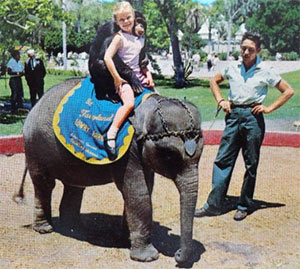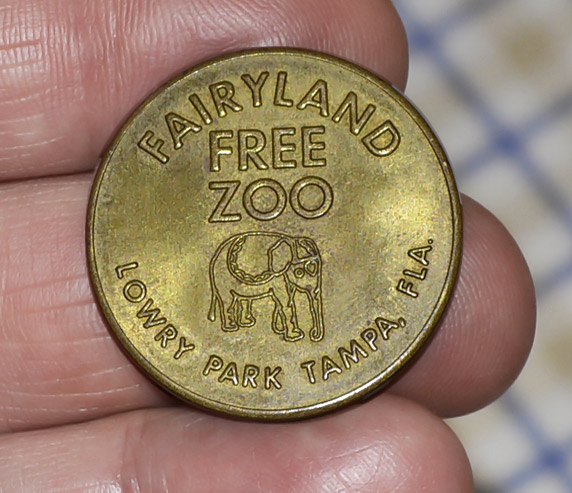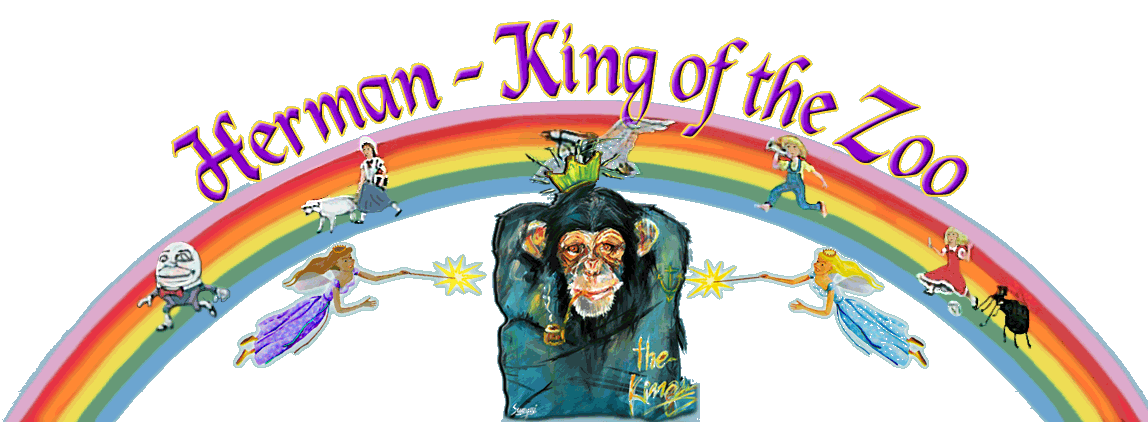
Lowry Park Zoo Undergoes $20 Million Renovation,
Transitions from City Management to Private Organization
From "Zoo Story: Life in
the Garden of Captives, by Thomas French
(at Internet Archive)
Nick Nuccio, the Tampa mayor who
had started it all, called the zoo "a children's paradise." As
the years passed, though, Lowry Park aged poorly. What was once
quaint became dreadful. The train rusted, and two toddlers
were injured when a kiddie ride roller coaster derailed, and Sheena
the elephant was shipped off to Canada, where she died of a heart
attack. Worst of all was the soul-killing collection of
dilapidated cages where the animals kept dying from abuse.
Years later, adults who had visited the zoo as children still
shuddered when they recalled the grimness of the place..."It was a
rat hole" one city councilman remembered.
As the zoo collection continued
to grow through the 1970s, the need to upgrade the habitats and present
the animals in natural settings became an issue, the zoo facilities were
in need of repair and renovation, with the animals cramped concrete
quarters were so poor that the Humane Society called it “one of the worst zoos
in America.” The need was fully embraced by the Tampa bay area
community, which resulted in the formation of an organization dedicated to
building a first-class zoological garden.
 In 1981 the Tampa Parks
Department and Citizens Advisory Board called for zoo improvements. The Lowry
Park Zoo Association formed at the suggestion of the Tampa Parks Department,
Mayor Bob Martinez, and private citizens who shared a common vision. Its
mission was to raise awareness of Tampa's Lowry Park Zoo and promote a
public-private partnership to fund the renaissance of Tampa's Lowry Park Zoo.
Soon after, the Zoo Association embarked on a $20 million capital campaign,
and the City of Tampa committed $8 million. In 1981 the Tampa Parks
Department and Citizens Advisory Board called for zoo improvements. The Lowry
Park Zoo Association formed at the suggestion of the Tampa Parks Department,
Mayor Bob Martinez, and private citizens who shared a common vision. Its
mission was to raise awareness of Tampa's Lowry Park Zoo and promote a
public-private partnership to fund the renaissance of Tampa's Lowry Park Zoo.
Soon after, the Zoo Association embarked on a $20 million capital campaign,
and the City of Tampa committed $8 million.
.
 In 1984 the Zoo Board of Directors
and J. D. Porter developed a comprehensive, 24-acre zoo
master plan. In 1988 the Zoo Association became the Lowry Park Zoological
Society, a private, independent, nonprofit organization dedicated to the
management and ongoing development of a superior zoological garden, and was no
longer owned by the City of Tampa Parks Dept. In 1984 the Zoo Board of Directors
and J. D. Porter developed a comprehensive, 24-acre zoo
master plan. In 1988 the Zoo Association became the Lowry Park Zoological
Society, a private, independent, nonprofit organization dedicated to the
management and ongoing development of a superior zoological garden, and was no
longer owned by the City of Tampa Parks Dept.
SEE
Bringing Down the Bars
Nov. 18, 2019 - Doug Porter and his time in
Tampa during Lowry Park Zoo's transition of 1984.
After several years of
fundraising and the help and support of mayor Bob Martinez and the city
of Tampa, the original Lowry Park Zoo closed with a ceremony on Monday, September 7, 1987
at 6pm for its $20
million reconstruction. There were no admission fees for the last days
of the old Lowry Park Zoo, with the new zoo expected to charge $3 for adult
admission and $1.50 for students. The amusement rides, which were not
affiliated with the zoo, were closed on the final weekend.
Also on the final weekend, Reynolds
Aluminum Recycling, in cooperation with radio station Q105 and Pepsi-Cola,
celebrated the closing/remodeling with a "Cans for Critters" fund-raiser.
Reynolds gave free memberships to the first 7 recyclers to donate 25 lbs. or
more to the campaign. The family memberships, which were expected to go
on sale in October of 1987 for $25, would admit a family to the new zoo for a
year. Over the
next 3 to 4 months, animals were shifted from the old zoo to new homes, to be
joined by other animals throughout the country. A large, screened-in
aviary was planned to be open the following January, featuring 100
species of birds in a walk-through exhibit.
A second portion, the Primate World, was
built to display eight species of primates from chimpanzees to red-ruffed
lemurs. The third segment, the Asian Domain, was to give visitors a look
at animals such as elephants, camels and leopards.
|

April 12, 1985
Moving day at the Lowry Park Zoo in Tampa went pretty smoothly Friday.
The cougars were prodded from above their cages into a truck waiting
nearby.
TBT archives photo
|
|
  A
Ride to Remember - April 19, 2014 A
Ride to Remember - April 19, 2014
A Zoo Man's Musings
J. D. (Doug) Porter is a zoologist, an
educator, and a writer who takes the unorthodox and controversial
view that zoos can be good for animals – if they are done right.
I have been doing some reminiscing
(and some writing) about the early days at the Lowry Park Zoo. I
love this photo of my son Jason and the story it tells, as he sits
atop Buke – a massive male Asian elephant.
1985 -
Jason Porter atop Buke, the male elephant brought in to share
Sheena's enclosure at Lowry Park to accompany Sheena to Canada and
make her transportation less traumatic.
A Ride to Remember
- April 19, 2014
The
Lowry Park Zoo, at that time, had one 24 year old Asian elephant
named Sheena, who had been donated to the zoo in 1961 by the Park’s
namesake** General Sumter L. Lowry, Jr. The new master plan
had been designed around her and the building she inhabited, but in
order to build her new facilities, she would need to be moved to
another zoo for a few years. After searching far and wide, we found
a good facility at
African
Lion Safari near Toronto Canada that would take her. They had
proper facilities, other elephants, and a highly competent staff.
All we had to do was figure out how to get her there. I described
the process in my article for the Zoo’s newsletter in the fall of
1985.
**The park was named for Gen. Lowry's
father, city commissioner Dr. Lowry, not Gen. Lowry.
The Death of
Sheena
This bronze elephant is
located at the entrance to the Asian domain within the Lowry Park
Zoo, and is intended to serve as a memorial to Baby Sheena, who was
donated to the zoo by Sumter L. Lowry, Jr. in December, 1960. Lowry
intended Sheena to be a gift to the children of Tampa, who, in 1960,
had not been exposed to elephants in a local setting.
Read the rest of the article by Doug Porter
and the circumstances of Sheena's death
here at the breakout feature
about Sheena, here at TampaPix.
Sheena, 1986, Bronze 4’ x 5’
Lowry Park Zoo
by
Joyce Parkerson
|
Don't
miss
J.
D. (Doug) Porter's interesting blog about zoos
and other related topics.
He is an excellent author and has written quite a few
books.
"From animal keeper to zoo director, my career
spanned over forty years. It included positions with a
half dozen of America’s great zoos during the most
transformational era in zookeeping in more than a
century—a time when zoos went from 19th century
menageries to modern day arks."
Five articles are specifically about his years at Lowry
Park:
A Ride to Remember - Memories of Sheena's
preparation to relocate her in Canada
Apr. 19, 2014
Good Sized Zoo for the City of Tampa - A brief
history of Tampa's zoos.
Nov. 7, 2019
Bringing Down the Bars - Doug Porter and his time in
Tampa during Lowry Park Zoo's transition of 1984.
Nov. 18, 2019
An Elephant Moves to Canada - Sheena, from beginning
to end.
Nov. 27, 2019
Tampa's Lowry Park Chimps Walk on Grass - The story
of Herman and Gitta from Liberia to Lowry Park.
Dec. 5, 2019 |
|
THE NEW ZOO AND FAIRYLAND WALK AT
FUN FOREST

The rejuvenated first phase of the
revamped zoo opened on March 5, 1988 with a Free-Flight Aviary, Asian Domain,
Primate World and a Children's Village/Petting Zoo.
Fairyland returned, along with the original rainbow bridge entrance (without the large
pool), as the Fairyland walk at the "Fun Forest," with many of the original storybook
character statues having been cleaned up, or repaired and repainted, and
possibly even replaced or removed.
Riding a camel at the newly
opened zoo, Mar. 6, 1988.
TBT archives photo courtesy
of Kimi Lau-Costanzo
More than 614,000
people visited the Zoo during its first 12 months after reopening.
 |
|
Ralph Alday of Tampa's
City Parks Dept. puts finishing touches on the newly refurbished
Fairyland walk at Lowry Park, Sept. 1989.
Photo from Historic
Images. |
By February of 1992 the
newly renovated park consisted of the zoo, amusement park, Fun Forest with
Fairyland walk, and new Children's Museum (formerly Safety Village) adjacent
to it. Admission to the Lowry Park Zoo was $5.50 for adults, $3.50 for
children 4 to 12 and $4.50 for the elderly (children 3 and younger free). The
newly built zoo had 1,600 animals in enclosures designed to resemble native
habitats, and attractions included a 175-bird aviary and an underwater view of
a manatee. There was also a children's petting zoo and the fountain at the
entrance where they could wade.
Fun Forest at Lowry Park had 19 rides as well
as a playground and the "Fairyland" walk. Admission to the amusement park was
free, but it took three tickets to board each of the rides; individual tickets
cost was 40 cents, a 20-ticket book was $6.95 and an all-day wristband was
$9.95.
(1992
NY Times article: What's Doing In Tampa, by Tampa resident Sara
Kennedy; Published: February 2, 1992. Recent zoo history from
Lowry Park Zoo website.
Sept 4, 1987 Visit the Zoo Before the Gates Close
Conclusion)
|














 In 1981 the Tampa Parks
Department and Citizens Advisory Board called for zoo improvements. The Lowry
Park Zoo Association formed at the suggestion of the Tampa Parks Department,
Mayor Bob Martinez, and private citizens who shared a common vision. Its
mission was to raise awareness of Tampa's Lowry Park Zoo and promote a
public-private partnership to fund the renaissance of Tampa's Lowry Park Zoo.
Soon after, the Zoo Association embarked on a $20 million capital campaign,
and the City of Tampa committed $8 million.
In 1981 the Tampa Parks
Department and Citizens Advisory Board called for zoo improvements. The Lowry
Park Zoo Association formed at the suggestion of the Tampa Parks Department,
Mayor Bob Martinez, and private citizens who shared a common vision. Its
mission was to raise awareness of Tampa's Lowry Park Zoo and promote a
public-private partnership to fund the renaissance of Tampa's Lowry Park Zoo.
Soon after, the Zoo Association embarked on a $20 million capital campaign,
and the City of Tampa committed $8 million. In 1984 the Zoo Board of Directors
and J. D. Porter developed a comprehensive, 24-acre zoo
master plan. In 1988 the Zoo Association became the Lowry Park Zoological
Society, a private, independent, nonprofit organization dedicated to the
management and ongoing development of a superior zoological garden, and was no
longer owned by the City of Tampa Parks Dept.
In 1984 the Zoo Board of Directors
and J. D. Porter developed a comprehensive, 24-acre zoo
master plan. In 1988 the Zoo Association became the Lowry Park Zoological
Society, a private, independent, nonprofit organization dedicated to the
management and ongoing development of a superior zoological garden, and was no
longer owned by the City of Tampa Parks Dept.




